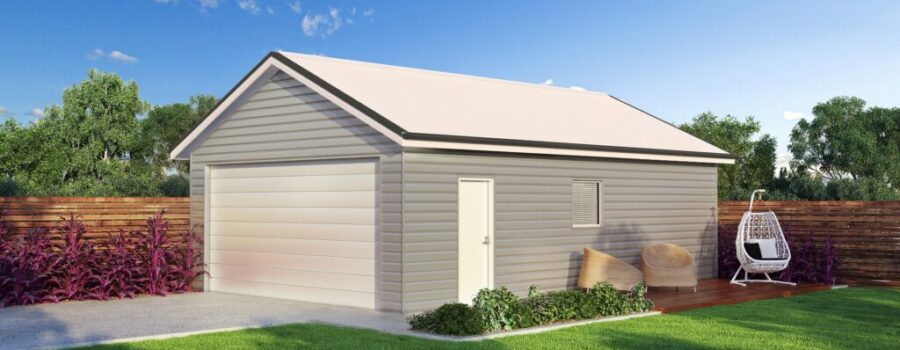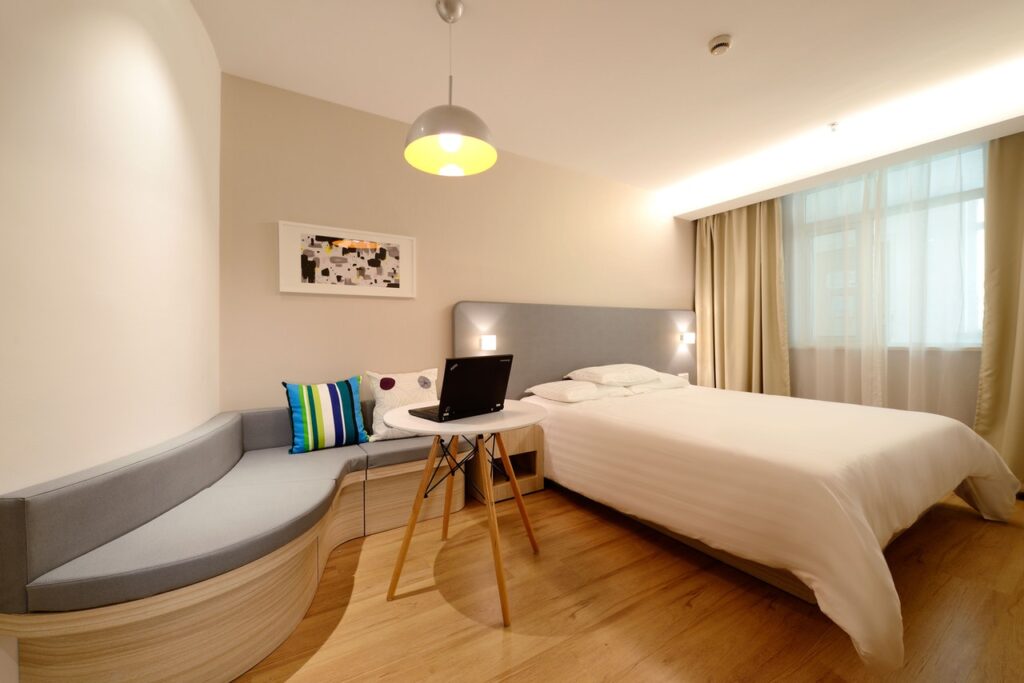
Calculating the Cost of an Accessory Dwelling Unit
In California, it’s possible for homeowners to add additional living units directly to their properties in the form of an accessory dwelling unit. An accessory dwelling unit refers to any living unit that’s added to a multi-family or single-family home. These additions are commonly referred to as second units or in-law quarters. Adding a secondary unit to your property can significantly increase the value of the property in question. However, the costs of developing an accessory dwelling unit can be high, which is why it’s important that you weigh the costs against the value that would be added to the property.
When you’re looking to create an accessory dwelling unit, there are several different ADU types that you can construct on your property. The ADU types available to you include conversions, attached units, and detached units. The type that you select depends largely on the costs as well as how the unit would look on your property. While your property may not be spacious enough to support the addition of a detached unit, you may have enough room to build an attached unit on your property. It’s possible to add an extra unit to your home as long as the addition isn’t larger than 50 percent of your current dwelling.
While it’s possible to calculate the costs of an accessory dwelling unit, doing so is very difficult because the prices can vary significantly. Even though a smaller basement ADU could cost around $20,000, it’s possible for an ADU that’s placed above a garage to cost upwards of $300,000-$400,000. The cost of hiring a builder can differ depending on the exact one that you choose. It’s also important to understand that the expenses related to materials and labor can vary depending on numerous factors. It’s possible to reduce some of these costs by doing the work yourself.
Instead of looking at the overall costs, it’s better to calculate costs of an ADU by looking at the cost per square foot. Keep in mind that an ADU is different than a small lot subdivision. While a small lot subdivision allows a property to be divided into smaller lots, these lots may not have enough room for an ADU. With an ADU, you can add value to your current property without needing to divide it into separate lots. This article offers an in-depth guide to the many benefits of an ADU.
Key Takeaways:
- ADU’s can significantly increase the value of your property, but the cost of developing an ADU may be high which is why we discuss the pros and cons.
- Additionally ADU’s have numerous functions when they are finished but your first step must be to apply for a building permit.
- Lastly, check for availability in the zone your property falls under.
Benefits to Having an ADU

There are numerous benefits that come with adding an accessory dwelling unit to your home, the primary of which is that it can add a significant amount of value to your property. Since an accessory dwelling unit doesn’t require a separate plot of land, building an ADU can be a great way to create another living space for friends or family on your own property. The main benefits that come with having an ADU include:
- You can use the ADU as a rental space, which will allow you to accrue rental income
- You can use this space as an independent unit for a relative or elderly parent
- An accessory dwelling unit can help to address the housing crisis in California
- The ADU that you build can be used as a flex space that accommodates family members, visiting relatives, or guests
If you believe that your property would benefit from the construction of an accessory dwelling unit, it’s important to understand that you will need to obtain a building permit before you’re allowed to complete development on the ADU. When you are getting ready to build an attached or detached ADU, you will be required to apply for a building permit with the City of Los Angeles Department of Building and Safety. In the event that your permit is granted, you should be able to start construction on the accessory dwelling unit immediately. Keep in mind that only one ADU can be built per lot.
If you’re weighing the pros and cons of constructing an accessory dwelling unit, these units are typically more affordable to construct when compared to a home. Since you won’t be required to buy new land or purchase new infrastructure for your property, the amount of money you pay for an accessory dwelling unit should be less than what you would pay for an entire home.
You can also set a specific budget for the project, which should be relatively simple to adhere to. Since an ADU can use any materials and be any size, you can choose to create an ADU that aligns perfectly with the budget that you’ve set. The value of your property should also increase substantially after adding an accessory dwelling unit, which could be a top consideration when you’re trying to determine if this option is right for you.
Checking for Eligibility for Your ADU

Before you start to think about hiring contractors and purchasing materials for development on the accessory dwelling unit, it’s first important that you check your eligibility for an ADU. Your eligibility depends mainly on which zone your property falls under. Each neighborhood throughout Los Angeles is situated under a specific zone. If you want to construct an ADU, it’s important to understand that your property will need to be situated in some kind of a residential zone, which could be a single-family zone or a multi-family zone. The majority of accessory dwelling units are built in single-family zones.
To build this unit, your lot will already need to be comprised of a house, which means that you can’t begin construction on an ADU if you have yet to develop a home on the land that you’ve purchased. While the floor plan for an ADU can be as large as 1,200 square feet, keep in mind that only a single ADU can be positioned on a lot. You also won’t be allowed to sell the ADU separately from the home. If you would like to sell the accessory dwelling unit, it must be listed as a part of your home. You can, however, use the ADU as a separate living space for individuals who would like to rent from you, which could provide you with a substantial amount of rental income.
Before you get started on the ADU, there are many building construction requirements and site requirements that the accessory dwelling unit must meet if you want construction to be completed in a timely manner. When you’re trying to identify if your property would allow for the construction of an ADU, you can use the ZIMAS online tool for a closer look at zone eligibility. All you need to do is enter your address to find which zone your lot falls under.
The majority of single-family or multi-family lots in Los Angeles are at least 3,500 square feet in size, which means that it should be easy to add an ADU to your property. On the other hand, feasibility problems may occur when attempting to build an ADU on a property that’s smaller than 3,500 square feet. With this information in hand, you should be ready to get started on the process of developing an accessory dwelling unit.
Helpful Links for You to Build Your ADU
There are plenty of reasons why you should consider building an ADU on your property. For one, an ADU will increase the value of your home and can provide you with more space for entertaining guests or accommodating visitors. You might also want to add more space to your home in the event that you plan to have a large family in the future. Since you can use an ADU as a rental space, it’s possible to obtain monthly rental income that you could put into savings or use for yearly vacations.
As long as you can afford to, another top reason to construct an accessory dwelling unit is because the unit can be built in a variety of different ways. For instance, you could convert a detached garage into an accessory dwelling unit if you don’t need to use the space for your vehicles. The ADU could also be an addition to your current home, which will expand the floor space for your property. If you don’t have a detached garage, an ADU could be built as a detached unit that you use as a living space for friends or relatives. The fourth and final type of ADU involves converting the interiors of your home in a manner that gives you more space. For instance, you could expand the size of your basement.
When you are thinking about building an accessory dwelling unit, there are several resources that you should take a look at to make sure that the process goes smoothly. A general ADU guidebook can be found at this link. This guidebook provides readers with an overview of accessory dwelling units, eligibility information, parking information, and answers to frequently asked questions pertaining to accessory dwelling unit.
You can also take a look at new ADU laws by going to this link. This document offers some details about new ADU legislation that was signed into law in April of this year. Some additional resources that could prove helpful when constructing an accessory dwelling unit include http://plus1house.org/ and https://www.housable.com/city/los-angeles-ca-961072. When you want to find out more about adopted ADU ordinances, you can do so by sending an email to adu@hcd.ca.gov\.
An accessory dwelling unit is a sizable renovation that will allow you to add value to your home, increase the curb appeal of the property, and provide your home with more space that could be used in many different ways. While these units can only be built on single-family and multi-family lots, the restrictions and guidelines that you will need to follow when building an ADU are relatively straightforward.

Jason Somers, President & Founder of Crest Real Estate
With over 15 years of professional experience in the Los Angeles luxury real estate market, Jason Somers has the background, judgement and track record to provide an unparalleled level of real estate services. His widespread knowledge helps clients identify and acquire income producing properties and value-ad development opportunities.
Learn more about Jason Somers or contact us.



